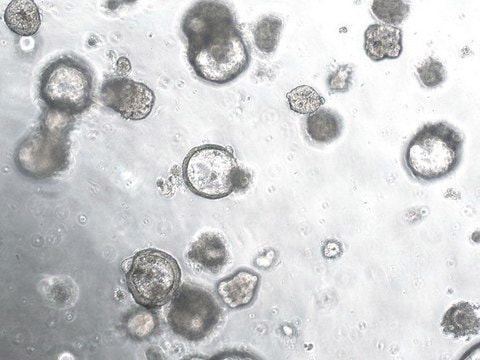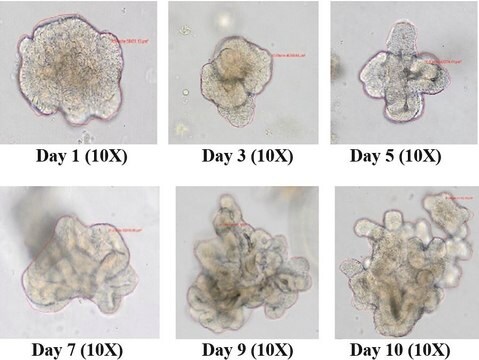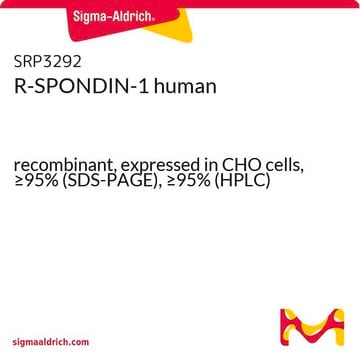SCM105
3dGRO® L-WRN Conditioned Media Supplement
Synonym(s):
Conditioned Media
About This Item
Recommended Products
form
liquid
manufacturer/tradename
Millipore
technique(s)
cell based assay: suitable
color
clear red
shipped in
ambient
storage temp.
−20°C
Application
Endotoxin: <2 EU/mL
Sterility Tested: No Growth/Pass
Media are tested for function in supporting growth of human intestinal organoids
Media are tested for levels of growth factors by ELISA
Source
The 3dGRO® L-WRN Conditioned Media Supplement is derived from the Mus musculus L-M(TK-) cell line secreting mouse Wnt3a, R-spondin-3 and Noggin. L-WRN Conditioned Medium may contain trace amounts of mouse DNA.
Features and Benefits
Storage and Stability
Legal Information
Disclaimer
Storage Class Code
10 - Combustible liquids
WGK
WGK 1
Certificates of Analysis (COA)
Search for Certificates of Analysis (COA) by entering the products Lot/Batch Number. Lot and Batch Numbers can be found on a product’s label following the words ‘Lot’ or ‘Batch’.
Already Own This Product?
Find documentation for the products that you have recently purchased in the Document Library.
Articles
Highly characterized human mesenchymal stem cell lines from bone-marrow, adipose and umbilical cord along with serum-free MSC expansion and differentiation media.
Highly characterized human mesenchymal stem cell lines from bone-marrow, adipose and umbilical cord along with serum-free MSC expansion and differentiation media.
Highly characterized human mesenchymal stem cell lines from bone-marrow, adipose and umbilical cord along with serum-free MSC expansion and differentiation media.
Highly characterized human mesenchymal stem cell lines from bone-marrow, adipose and umbilical cord along with serum-free MSC expansion and differentiation media.
Related Content
Culture in 2.5D using small intestine duodenum organoids and Millicell® hanging cell culture inserts to monitor long-term drug side effects and toxicity.
Culture in 2.5D using small intestine duodenum organoids and Millicell® hanging cell culture inserts to monitor long-term drug side effects and toxicity.
Culture in 2.5D using small intestine duodenum organoids and Millicell® hanging cell culture inserts to monitor long-term drug side effects and toxicity.
Culture in 2.5D using small intestine duodenum organoids and Millicell® hanging cell culture inserts to monitor long-term drug side effects and toxicity.
Our team of scientists has experience in all areas of research including Life Science, Material Science, Chemical Synthesis, Chromatography, Analytical and many others.
Contact Technical Service

![[Leu15]-Gastrin I human ≥95% (HPLC)](/deepweb/assets/sigmaaldrich/product/structures/153/342/d4cb3dd7-13f1-46cf-8d1f-3907a5de7a83/640/d4cb3dd7-13f1-46cf-8d1f-3907a5de7a83.png)






